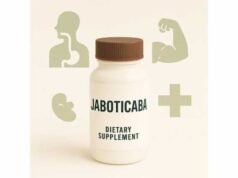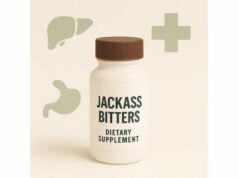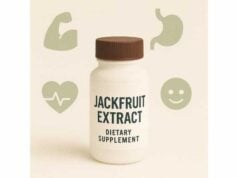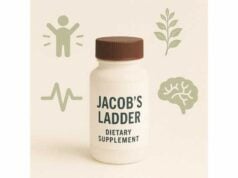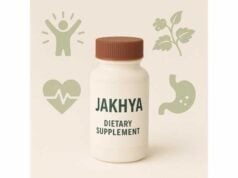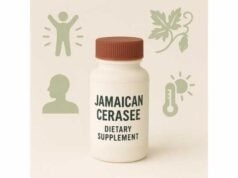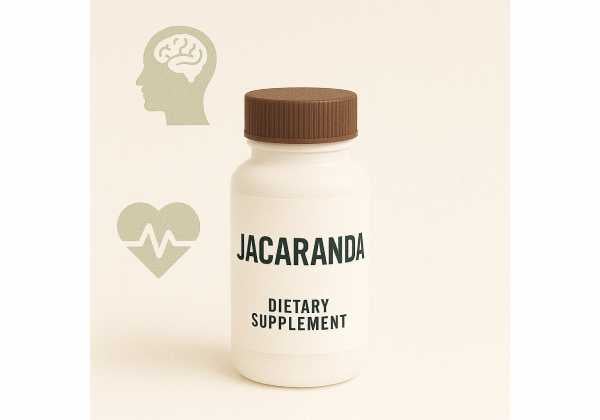
Jacaranda is best known for its violet-blue blossoms that canopy streets each spring, but several Jacaranda species have also been used in traditional medicine across Latin America and Africa. Leaves, bark, and especially the flowers contain polyphenols, flavonoids, and triterpenes that show antioxidant and antimicrobial activity in laboratory studies. Topical extracts from Jacaranda decurrens (carobinha) have been explored for wound care in animal models, while food-grade preparations made from Jacaranda mimosifolia flowers demonstrate pronounced free-radical scavenging and inhibitory effects against certain bacteria in vitro. That said, human clinical data are limited, and safe, standardized dosing is not established. If you’re curious about Jacaranda as a natural product, this guide explains what it is, where the interest comes from, what forms are used, what early research suggests, and how to think about safety, interactions, and quality.
Fast Facts
- Antioxidant-rich Jacaranda flower extracts show strong in-vitro free-radical scavenging and inhibit selected microbes.
- Topical Jacaranda decurrens formulations improved wound closure and modulated inflammation in mice.
- No standardized human dosage; follow product labels; teas often use ~1–2 g dried leaf per cup.
- Avoid if pregnant, breastfeeding, or on anticoagulants; safety in these groups is unknown.
Table of Contents
- What is Jacaranda?
- Proven benefits and mechanisms
- How to use Jacaranda safely
- Dosage: what real-world users do
- Common mistakes and quality checks
- Risks, side effects, and who should avoid
- Evidence check: what studies show
What is Jacaranda?
Jacaranda is a genus of roughly 50 species in the Bignoniaceae family, native to tropical and subtropical regions of the Americas and widely naturalized elsewhere. The ornamental Jacaranda mimosifolia—famous for its lavender-blue flowers—differs from medicinally used Brazilian species like Jacaranda decurrens (also called carobinha or caroba) and Jacaranda cuspidifolia, which feature more prominently in folk remedies. Historically, different parts of the plant—leaves, flowers, bark, and roots—have been used as teas, poultices, and ointments for skin complaints, minor infections, and general “blood cleansing.” Modern analyses identify several groups of small molecules that plausibly underlie these uses:
- Polyphenols and flavonoids (e.g., quercetin, rutin, caffeic and gallic acids) that neutralize free radicals in chemical assays and may modulate inflammatory signaling.
- Triterpenes (e.g., oleanolic and ursolic acids) with broad-interest bioactivity in bench research, including antioxidant, antimicrobial, and wound-healing relevance.
- Iridoids and phenylethanoid derivatives, a diverse class of plant metabolites often associated with defense and stress responses.
- Jacaranones (semibenzoquinone-type compounds) reported mainly from members of a few plant families; they’re bioactive in cell models but not established as supplements.
It’s important to distinguish ornamental use from therapeutic exploration. Street trees and garden prunings are not a safe or reliable source of medicinal material; research samples are typically authenticated, solvent-extracted plant parts processed under controlled conditions. Equally important, there is no widely accepted clinical indication for Jacaranda in mainstream medicine. The interest today is as a promising natural product candidate for topical care and as a source of antioxidant-rich extracts—not as a replacement for proven therapies.
Finally, products labeled simply “Jacaranda” may contain different species, plant parts, and extraction methods. If you choose a commercial product, verify the botanical species (binomial name), plant part, extraction solvent, and standardized constituents on the label. This transparency improves predictability and safety.
Proven benefits and mechanisms
Because most Jacaranda data come from in-vitro (test-tube) and animal studies, “proven benefits” should be interpreted as early-stage signals—useful for guiding research and formulating topical products, but not yet as clinical claims for humans. With that caveat, three areas stand out:
1) Antioxidant capacity. Extracts from Jacaranda mimosifolia flowers display high total flavonoids and robust activity in standard chemical assays (e.g., ABTS, DPPH). In one study, methanolic flower extracts inhibited free radicals strongly and outperformed aqueous extracts, a pattern consistent with polyphenols being more soluble in alcohol-water mixtures. In rat and erythrocyte models, hydroethanolic extracts from Jacaranda decurrens decreased markers of lipid peroxidation and modulated endogenous antioxidant enzymes. These findings support the rationale for skin-care and recovery-focused applications where oxidative stress is involved, and they help explain traditional use of leaf/bark teas as general tonics.
2) Antimicrobial and antibiofilm effects. Multiple laboratory investigations show activity against Gram-positive bacteria (e.g., Staphylococcus, Streptococcus) and some Gram-negative species, with potency depending on plant part and solvent (methanol or hydroalcoholic extracts often perform best). Phytochemical fingerprints identify verbascoside (acteoside) and other phenolics in bark or leaf extracts; flower extracts also contain quercetin and rutin. While these are not substitutes for antibiotics, such activity can be meaningful for cosmetic or hygiene formulations and helps justify topical uses in folk medicine. Silver or zinc oxide nanoparticles synthesized using Jacaranda flower extracts also demonstrate antimicrobial properties in vitro, suggesting value as green reducing agents in nanomaterial fabrication—an industrial rather than nutritional application.
3) Wound-healing support (preclinical). A topical hydroalcoholic extract ointment from Jacaranda decurrens accelerated wound closure in mice, reduced inflammatory cytokines (e.g., TNF-α, IL-1β), and increased expression of repair-related genes (e.g., TGF-β, collagen I). Histology indicated improved re-epithelialization and collagen organization. This combination—anti-inflammatory modulation plus antioxidant activity—maps well to the physiology of skin repair and aligns with traditional dermatologic use. Translating mouse data to humans requires clinical trials, but the mechanistic profile is coherent.
How might it work? The picture is consistent with polyphenol-driven redox modulation (scavenging free radicals, indirectly adjusting antioxidant enzymes), membrane and enzyme interactions (e.g., triterpenes and phenolics affecting microbial membranes or enzymes), and gene expression changes in wound models (elevating TGF-β, shifting collagen I/III balance). Jacaranone-type metabolites show cytotoxic effects in cell lines; while scientifically interesting, they’re not a basis for self-treating cancer and underscore the need for cautious, topical-first exploration rather than high-dose oral use.
Bottom line: Jacaranda’s best-supported applications today are topical and cosmetic (wound care research, antioxidant skin support) and food-grade extracts emphasizing antioxidant capacity. Internal therapeutic claims remain unproven in humans.
How to use Jacaranda safely
There is no single “standard” way to use Jacaranda. Your approach should reflect your goal (culinary/tea, topical care, or research-grade extract), your tolerance, and the product’s specifications.
1) Topical preparations (most practical today)
- Ointments/creams/gels: Research-grade ointments using hydroalcoholic leaf extract have been tested in animal wound models at concentrations around 15 mg of extract per gram of base (1.5%). Commercial skincare products, if available, may use different strengths. Start with a small patch test (e.g., inner forearm) for 24 hours to check for irritation.
- Cleansers/toners: Alcohol-water extracts rich in polyphenols may be formulated in toners; sensitive skin types should prefer low-alcohol vehicles or buffered gels.
- Poultices/DIY: Avoid DIY preparations from ornamental trees; contamination, misidentification, pesticide residues, and variable chemistry are real risks. Use authenticated, food-grade material.
2) Teas and food-grade extracts
- Infusions: Traditional use involves leaf or bark teas. A practical kitchen guideline is ~1–2 g dried material (about 1–2 teaspoons loosely packed) per 200–250 mL hot water, steeped 10–15 minutes, up to 1–2 cups per day. This is a culinary-level exposure, not a medical dose.
- Flower powders/extracts: Where available as food ingredients, follow label directions. Alcohol-based tinctures may concentrate actives; alcohol-free glycerites are gentler for sensitive users.
3) Capsules and “standardized” products
- Quality varies widely. Look for labels specifying species (e.g., Jacaranda decurrens, Jacaranda mimosifolia), plant part, extraction ratio (e.g., 10:1), solvent, and marker compounds (e.g., total polyphenols as gallic acid equivalents, total flavonoids as rutin equivalents).
- In the absence of clinical dosing guidance, stick to manufacturer serving sizes, and avoid combining multiple high-polyphenol extracts at once to reduce gastrointestinal upset.
4) Stacking and timing
- For topical use, apply after cleansing and before occlusives; pair with broad-spectrum sunscreen during the day.
- For teas or capsules, take with food to minimize stomach discomfort. Separate from iron supplements by 2–3 hours, as polyphenols may reduce iron absorption.
5) When to stop and seek care
- Discontinue and seek medical advice if you develop hives, swelling, breathing difficulty, or severe rash.
- For wounds, stop use and consult a clinician if redness, warmth, swelling, or pain worsens or if there is purulent discharge/fever.
Dosage: what real-world users do
Because Jacaranda lacks large human trials, dosage is best framed as exposure ranges from traditional practice and preclinical formulation, not as prescriptive medical advice.
Topical
- Preclinical ointments: Lab-formulated ointments for mice used ~15 mg extract per gram of base (≈1.5%). Human skincare products—if they list content—often range from 0.5–2% extract equivalents for botanicals in the antioxidant/soothing category.
- Practical starting point: Choose a product with declared concentration. Apply a pea-sized amount to a small area once daily for a week, then increase to twice daily if tolerated. For acute minor skin irritation (non-infected, superficial), 5–14 days of use is common in botanical skincare routines.
Teas/infusions
- Culinary-level intake: 1–2 g dried leaf or bark per 200–250 mL water, 1–2 times daily. For sensitive stomachs, start at 0.5–1 g per cup.
- Taste and tolerance: Jacaranda teas can be bitter/astringent; adding lemon or honey may improve palatability. If you notice nausea or cramping, halve the strength or frequency.
Capsules/tinctures
- When labels specify marker compounds (e.g., “≥20% total polyphenols”), follow lowest label dose for 1–2 weeks, monitor tolerance, and reassess.
- Avoid “megadosing.” Polyphenol-rich extracts can interact with medications and may cause gastrointestinal symptoms when overused.
What not to do
- Do not extrapolate animal oral doses (e.g., 200 mg/kg in rodents) to human self-use; such conversions require professional allometric scaling and safety margins.
- Do not ingest homemade extracts from landscape trees; solvent residues, misidentification, and contaminants are serious concerns.
- Do not use Jacaranda internally for serious infections, ulcers, or chronic diseases without medical supervision; evidence is not adequate.
Expectations and timelines
- Topical calming/soothing sensations may be noticeable within days; appearance changes (texture, dryness) may take 2–4 weeks of consistent use.
- Teas are adjunctive; subjective benefits like comfort or digestion are individual and subtle.
Common mistakes and quality checks
Mistake 1: Treating all “Jacaranda” as the same. Different species (e.g., J. mimosifolia vs. J. decurrens) and different plant parts (flowers vs. leaves vs. bark) have different chemical profiles. Solution: Verify full Latin name, plant part, and extract solvent on the label.
Mistake 2: Assuming alcohol-free equals better. Many polyphenols extract more efficiently into alcohol-water mixtures than water alone. Solution: If you avoid alcohol (skin sensitivity, religious reasons), look for glycerites or glycolic extracts with declared polyphenol/flavonoid content.
Mistake 3: Using it as an antibiotic substitute. Lab antibacterial activity does not equate to clinical efficacy. Solution: Use Jacaranda adjunctively for skincare/hygiene; seek medical care for infections.
Mistake 4: DIY from ornamental trees. Garden material can harbor pesticides, heavy metals, molds, and misidentified species. Solution: Use authenticated, contaminant-tested ingredients.
Mistake 5: Ignoring patch testing. Botanicals can trigger contact dermatitis in sensitive individuals. Solution: Patch test every new product for 24 hours; avoid broken skin during initial testing.
Mistake 6: Stacking too many astringent botanicals. Combining high-tannin extracts (witch hazel, green tea, Jacaranda) can dry or irritate skin. Solution: Alternate days or choose lower concentrations.
Quality checklist before buying
- Species and part listed (e.g., Jacaranda decurrens leaf).
- Extraction details (hydroalcoholic 70%, 10:1 ratio) and standardized markers (e.g., ≥25% total polyphenols).
- Contaminant testing (heavy metals, microbial, pesticide).
- Manufacturing standards (GMP).
- Patch-test guidance included on packaging.
Risks, side effects, and who should avoid
Known and plausible side effects
- Skin: Redness, itching, dryness, or contact dermatitis—especially with concentrated, alcohol-rich extracts or on compromised barriers.
- Gastrointestinal (tea/extracts): Nausea, stomach upset, or cramping—often dose-dependent and mitigated by taking with food or reducing strength.
- Allergic reactions: Rare but possible; discontinue immediately if hives, swelling, wheezing, or severe rash occur.
Interactions
- Anticoagulants/antiplatelets: Polyphenols and triterpenes can theoretically influence platelet function or drug metabolism; caution with warfarin, DOACs, clopidogrel, or high-dose NSAIDs.
- Chemotherapy/radiotherapy: Antioxidants can alter oxidative mechanisms leveraged by some therapies; coordinate with oncology teams before using concentrated extracts.
- Iron supplements: Polyphenols can reduce non-heme iron absorption; separate by 2–3 hours.
Who should avoid or seek medical guidance first
- Pregnant or breastfeeding individuals: Insufficient safety data.
- Children: Avoid internal use unless directed by a pediatric clinician.
- People with bleeding disorders or upcoming surgery: Theoretical interaction risks—pause 1–2 weeks before elective procedures unless advised otherwise.
- Chronic liver or kidney disease: Use only under clinician supervision; metabolism/excretion of complex botanicals can be altered.
- Active infections or non-healing wounds: Don’t self-manage with botanicals alone; get timely medical evaluation.
Sourcing safety
- Choose products with third-party testing and clear labeling.
- Avoid non-food-grade solvents and unverified imports lacking quality documentation.
- Store extracts away from heat and light; discard products with odor changes, cloudiness, or mold.
Evidence check: what studies show
Scope of evidence
The Jacaranda literature is heterogeneous and preclinical-heavy. Most data involve in-vitro antioxidant and antimicrobial assays and animal wound models. Human trials are absent for clear therapeutic indications.
Highlights from recent and representative research
- Jacaranda mimosifolia flowers: Methanolic and aqueous extracts showed high total flavonoids and strong ABTS/DPPH scavenging plus inhibitory effects against several bacteria. Chemical profiling identified quercetin, rutin, caffeic acid, and gallic acid, aligning with expected antioxidant mechanisms.
- Jacaranda decurrens leaves: Hydroethanolic extracts protected erythrocytes from oxidative damage, reduced serum malondialdehyde in rats on a high-fructose diet, and modulated antioxidant enzymes. In cancer cell lines (K562), the same extract induced cell death through late apoptosis and necrosis—a pharmacology signal, not a treatment claim.
- Topical wound model (mice): A hydroalcoholic leaf extract formulation accelerated wound closure, decreased TNF-α, IL-1β, increased TGF-β and collagen I expression, and improved histologic markers of repair.
- Jacaranda cuspidifolia bark: In vitro antibacterial activity was noted against Staphylococcus and Streptococcus species, with verbascoside identified as a major component—supporting a polyphenol-centric mechanism.
- Reviews: Ethnopharmacological surveys synthesize uses across species and identify jacaranone-type metabolites and diverse triterpenes/phenolics; they also caution about cutaneous toxicity noted for some constituents at higher exposures, reinforcing a topical-first, moderate-dose approach.
What this means for you
- The strongest near-term applications are topical, where preclinical data match real-world goals (calming, antioxidant support, adjunct to wound care under supervision).
- For internal use, Jacaranda is best considered culinary (light teas) or food-grade extract for general wellness interest—not as a disease-directed therapy.
- Progress to human trials and standardized dosing will determine whether Jacaranda earns a defined place in evidence-based integrative care. Until then, prioritize quality sourcing, conservative use, and medical guidance for any therapeutic aims.
References
- Jacaranda flower (Jacaranda mimosifolia) as an alternative for antioxidant and antimicrobial use 2020 (Laboratory Study)
- Antioxidant and Cytotoxic Activity of Hydroethanolic Extract from Jacaranda decurrens Leaves 2014 (Laboratory and Animal Study)
- Chemical Characterization and Wound Healing Property of Jacaranda decurrens Cham. (Bignoniaceae): An Experimental Study Based on Molecular Mechanisms 2020 (Animal Study)
- Jacaranda cuspidifolia Mart. (Bignoniaceae) as an antibacterial agent 2011 (Laboratory Study)
- Jacaranda–an ethnopharmacological and phytochemical review 2009 (Review)
Disclaimer
This article is for educational purposes only and is not a substitute for personalized medical advice, diagnosis, or treatment. Jacaranda preparations are not approved to prevent, diagnose, treat, or cure any disease. If you’re pregnant, breastfeeding, taking prescription medicines, have chronic health conditions, or plan surgery, talk with a qualified healthcare professional before using Jacaranda. Seek medical care promptly for infections, non-healing wounds, or other urgent concerns.
If you found this helpful, please consider sharing it with friends or colleagues on Facebook, X (formerly Twitter), or your favorite platform, and follow us for more evidence-guided wellness content. Your support helps us keep creating high-quality, accessible articles.

